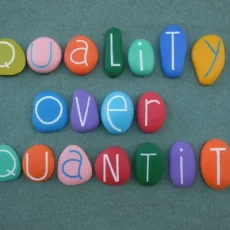I have heard a beautiful story of Hyakujo, the Chinese Zen master, who used to labour with his students even at the age of eighty–trimming the gardens, cleaning the grounds, and pruning the trees. The students would feel some kind of unease that their master was continuing working hard even at such an old age. They requested him not to exhaust himself so much into this kind of menial work and save his energy. The master would not listen to all this nonsense and laugh it away. But the disciples also wanted to do something about it so that he has some holiday from the work–they decided to hide the tools that the master was using in the garden.
Swami Chaitanya Keerti
For thousands of years in India and some other countries also, Sannyas or spiritual practice has been considered to be a life of renunciation–the seeker simply meditates in isolation and food is provided to him. And the common people feel bad or guilty if the sannyasin is left alone to remain hungry. They think he will curse them. Or sometimes they are motivated by their greed to be blessed by the sannyasin and to earn virtue. This becomes some kind of deal, which has roots in the fear and greed. The fear of hell and greed for heaven. A renunciate sannyasin enjoys this psychological play and continues to remain a parasite, who does not work but gets fed by others.
Many Sadgurus, the true masters, especially the Zen masters discouraged this tendency of the lethargic attitude of the meditators and taught them to work as meditation. Happyho also provides best Meditation and Tarot classes in Noida and Delhi NCR India area
The master is, after all, a master. The day he did not find his tools for working, he decided not to eat. The next day he did not eat, nor the next also. “He may be angry because we have hidden his tools,” the students surmised. “We had better put them back.” The day they did, the teacher worked and ate the same as before. In the evening he instructed them: “No work, no food.”
The Zen masters in China, Japan and elsewhere have been very down to earth people–even hard taskmasters. They did not want their disciples to become scholarly or intellectual–which is something very superfluous. They wanted their disciples to go deep in meditation without escaping from the work. They wanted their disciples to be meditative but creative also. Hence we see so much creativity in the world of Zen.
Osho is a true Zen Master of modern times. He says: “Cleaning a floor can be a tremendously creative act. Remember, creativity has nothing to do with any particular work. Creativity has something to do with the quality of your consciousness. Whatsoever you can become creative.”
In Nirvana the Last Nightmare, he concludes: A holy man is an ordinary man who loves ordinary life. Chopping wood, carrying water from the well, cooking — whatsoever he touches becomes holy. Not that he is doing great things, but whatsoever he does, he does it greatly. The greatness is not in the thing done. The greatness is in the consciousness that you bring while you do it. Try. Touch a pebble with great love; it becomes a Kohinoor, a great diamond. Smile, and suddenly you are a king or a queen. Laugh, delight….Each moment of your life has to be transformed by your meditative love. When I say be creative, I don’t mean that you should all go and become great painters and great poets. I simply mean let your life be a painting, let your life be a poetry.


